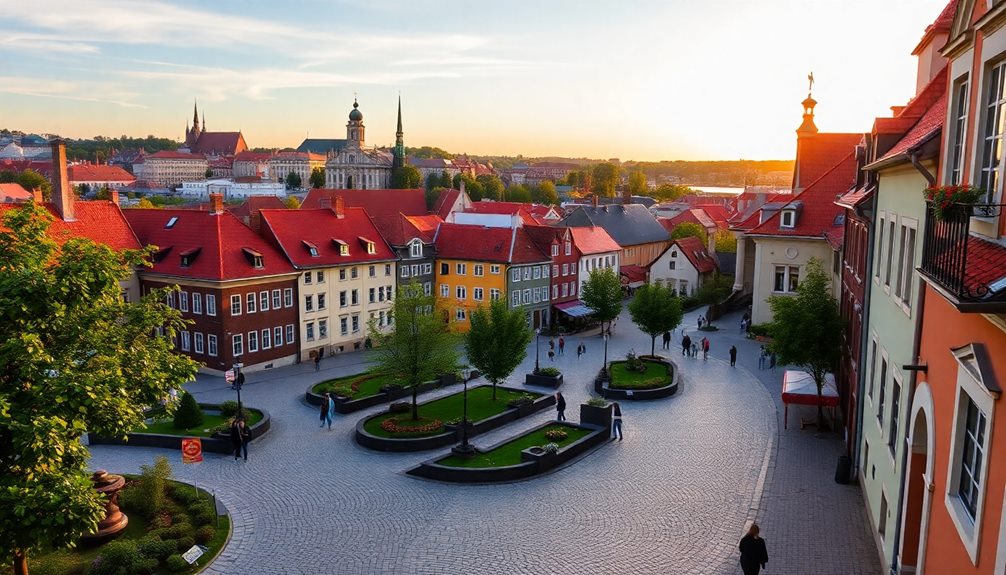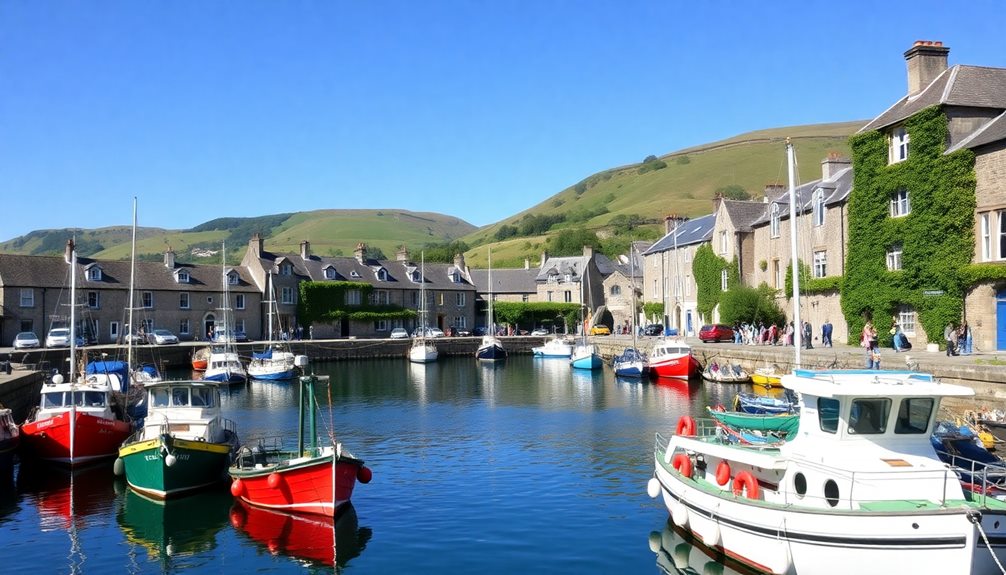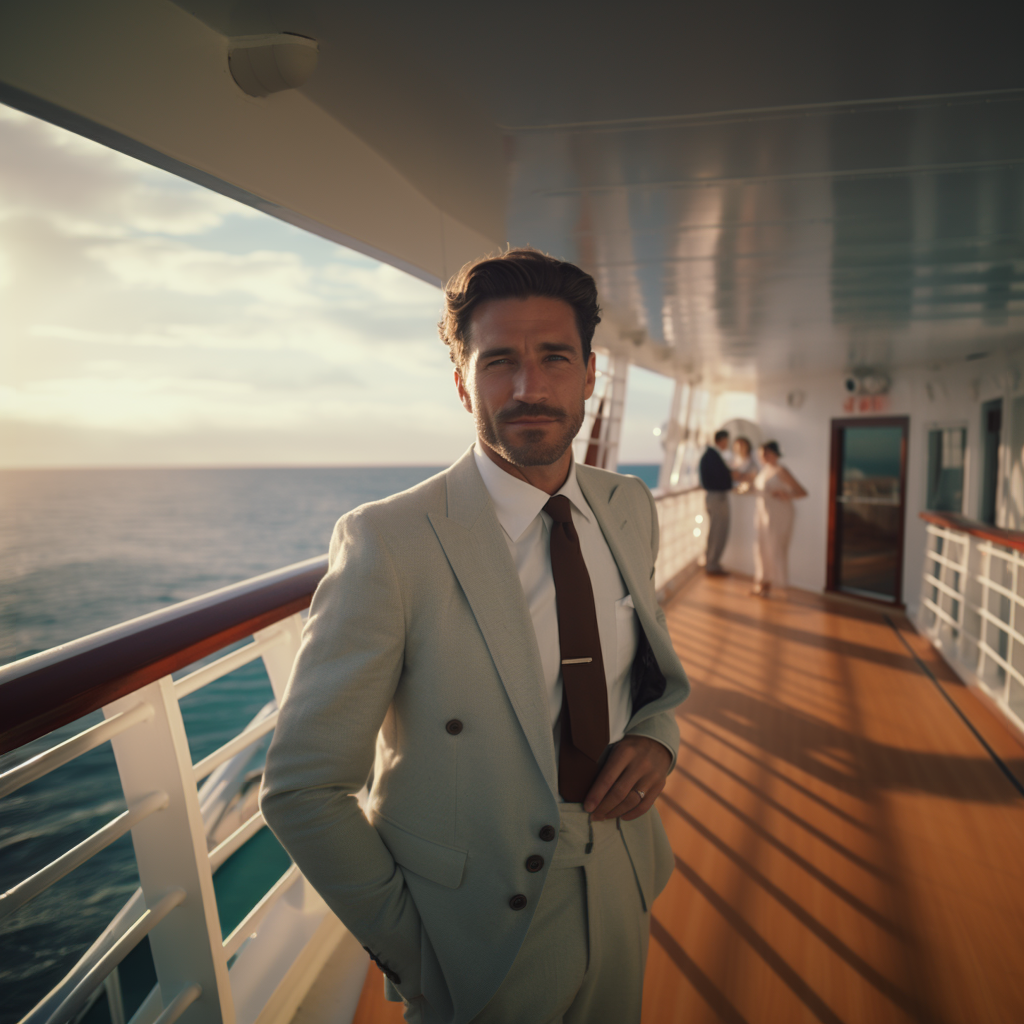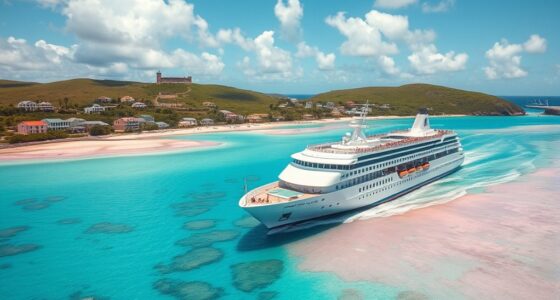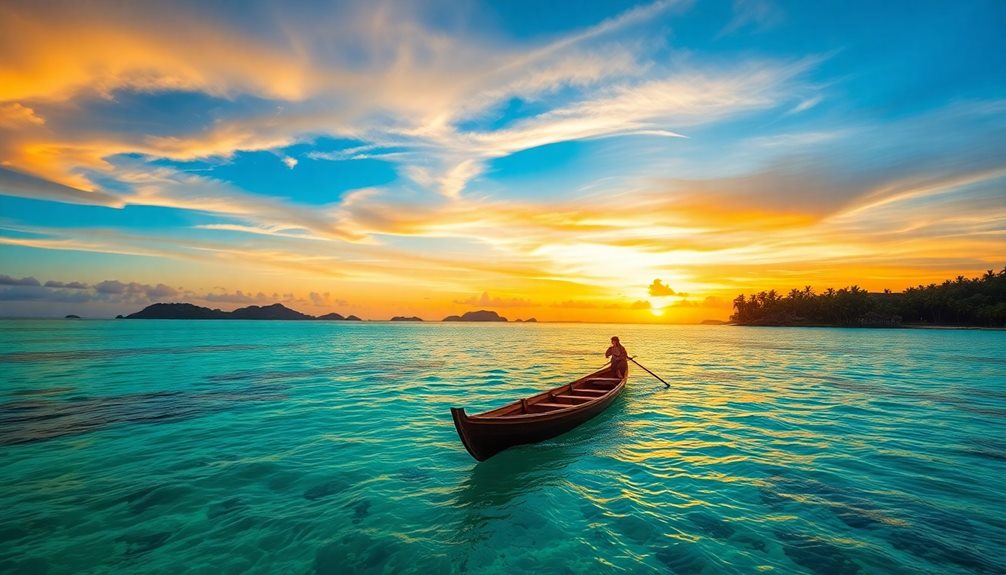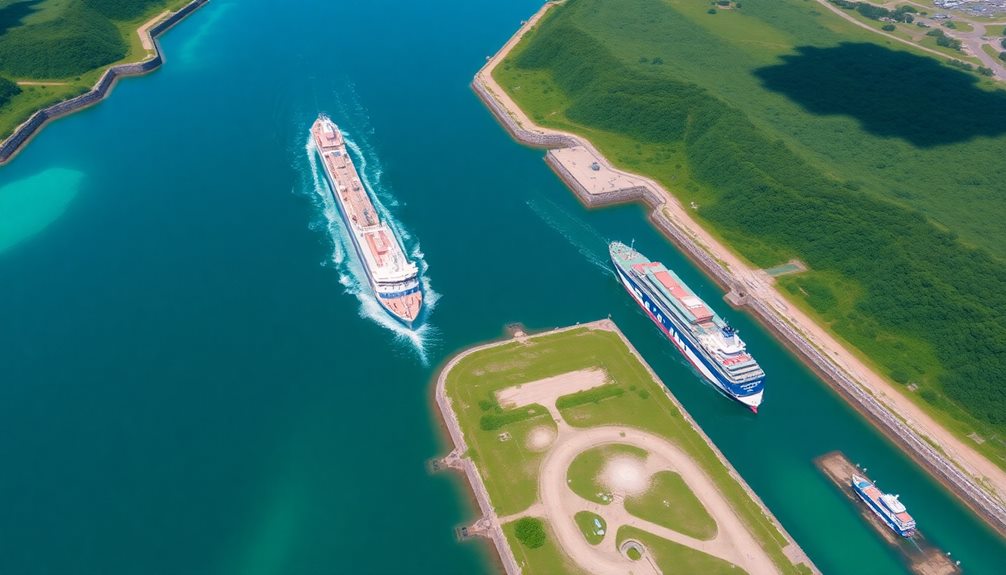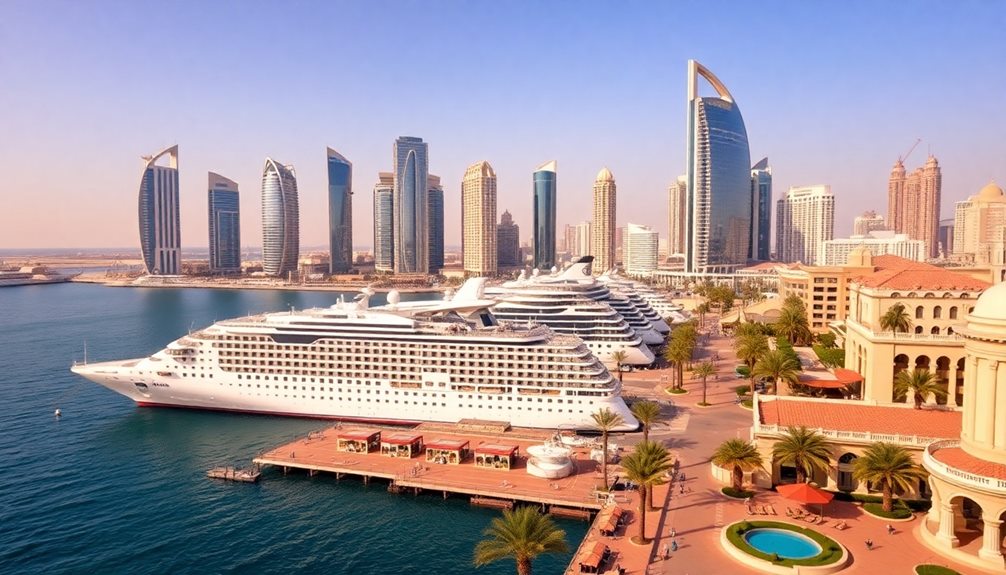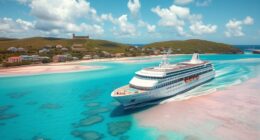Walking through the Baltic capitals of Vilnius, Riga, and Tallinn reveals a rich blend of history and culture. In Tallinn, start at St. Mary's Cathedral and explore the charming Town Hall Square. Riga invites you to admire its stunning Art Nouveau architecture and the historic Three Brothers. Don't miss Vilnius' UNESCO-listed Old Town, where you can stroll past over 1,200 medieval buildings and 48 historic churches. Each city has unique walking routes filled with hidden gems and vibrant local life. If you're curious about specific tour options and highlights, you'll find plenty more insights awaiting you.
Key Takeaways
- Tallinn Walking Tour: Start at St. Mary's Cathedral, explore Town Hall Square, and visit Toompea Castle for panoramic views of the city.
- Riga Walking Tour: Discover The Three Brothers, stroll through the Art Nouveau District, and visit the Occupation Museum for historical insights.
- Vilnius Walking Tour: Explore the UNESCO-listed Old Town, visit Vilnius Cathedral, and climb Gediminas Tower for stunning city views.
- Cultural Highlights: Engage with local traditions, taste culinary delights, and discover hidden gems during walking tours in each capital.
- Flexible Itineraries: Walking tours allow for spontaneous exploration while covering the key architectural and historical landmarks in the Baltic capitals.
Overview of the Baltic Capitals
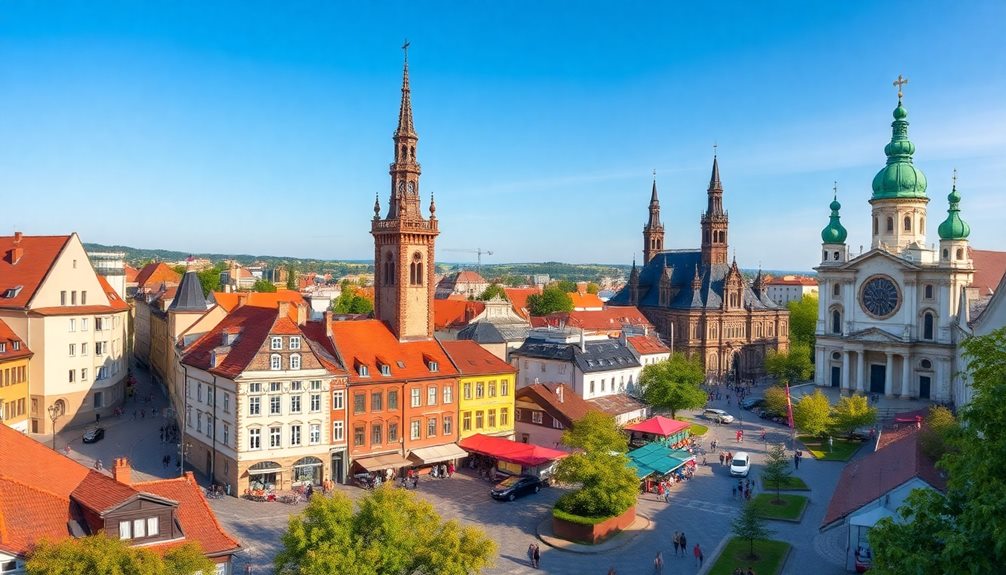
The Baltic Capitals—Vilnius, Riga, and Tallinn—each boast a rich cultural heritage and a unique historical narrative that reflects their diverse influences. When you explore these cities, you'll discover how the Baltic States intertwine history with modern life.
Vilnius, Lithuania's capital, invites you to wander through its Old Town, where over 1,200 medieval buildings and 48 historic churches showcase a stunning blend of Gothic, Renaissance, and Baroque architecture.
Walking tours here let you appreciate the intricate details and stories behind each structure.
Riga, the largest of the Baltic capitals, captivates with its Art Nouveau architecture. As you stroll, you'll encounter landmarks like the Freedom Monument and the House of the Blackheads, each echoing the city's vibrant past.
Tallinn's UNESCO-listed Old Town is a must-see, renowned for its well-preserved medieval architecture that transports you back in time.
Surrounded by beautiful natural scenery, including lush forests, it offers a picturesque backdrop for your explorations.
In all three capitals, you'll find that walking tours provide the perfect opportunity to immerse yourself in local culture, culinary delights, and enduring traditions.
Tallinn Walking Tour Highlights
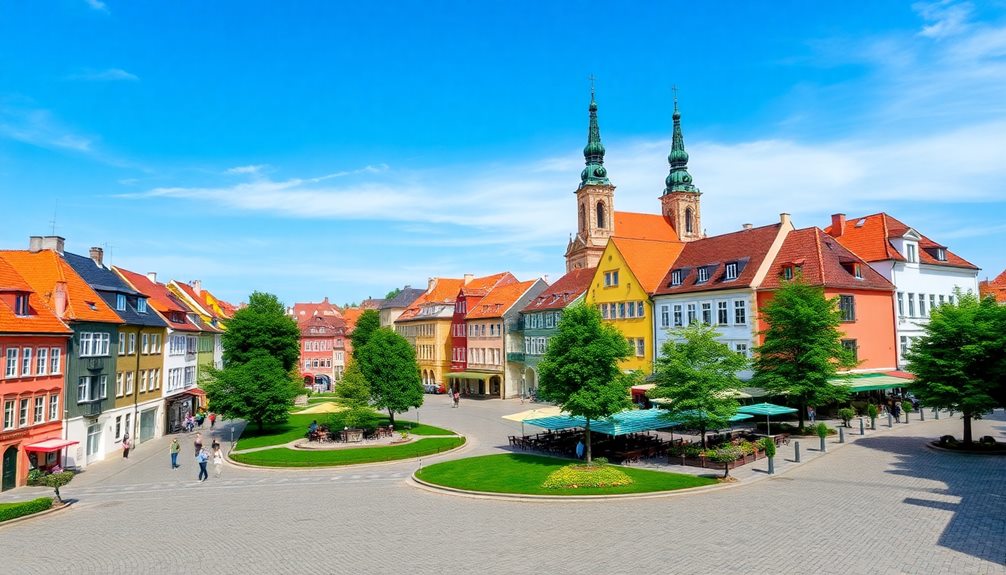
Exploring Tallinn's UNESCO-listed Old Town is like stepping into a medieval fairytale, where cobblestone streets and stunning architecture transport you back to the 13th century.
Your walking tour kicks off at the magnificent St. Mary's Cathedral, renowned for its striking Gothic design. As you wander, you'll find the historic Town Hall Square, home to the Tallinn Town Hall, one of Northern Europe's best-preserved Gothic structures.
Next, head towards Toompea Castle. Perched on a hill, it offers breathtaking panoramic views of the city and a glimpse into Estonia's rich history. You'll appreciate its impressive architecture and the stories it holds.
No tour is complete without a visit to the iconic Alexander Nevsky Cathedral. This stunning example of Russian Revival architecture stands proudly on Toompea Hill, capturing your attention with its ornate domes and intricate details.
As you meander through St. Catherine's Passage, you'll discover artisan shops and workshops that reflect Tallinn's vibrant cultural heritage.
Each stop on your walking tour reveals the city's charm and history, making your experience in Tallinn truly unforgettable.
Exploring Riga's Hidden Gems
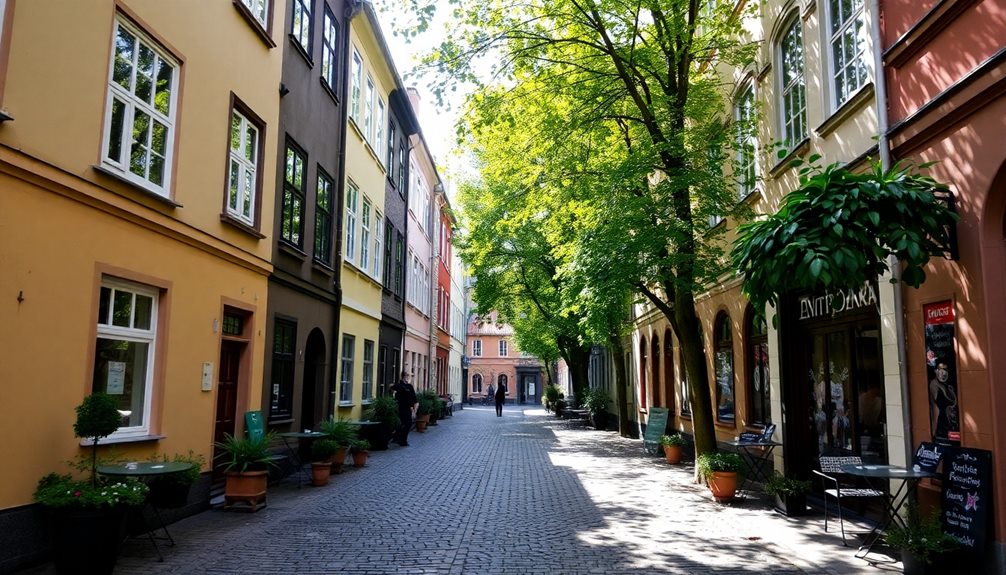
Riga's Old Town is packed with history, but beyond its cobbled streets lie hidden gems waiting to be discovered. As you begin your walking tour, keep an eye out for these must-see spots:
- The Three Brothers: This trio of 15th-century buildings is the oldest housing complex in Riga, showcasing stunning architectural evolution over the centuries.
- Art Nouveau District: With over 800 intricately designed buildings, this area highlights Riga's status as one of Europe's top cities for Art Nouveau architecture.
- Occupation Museum: Gain a poignant insight into Latvia's turbulent past through personal stories and artifacts that illustrate the impact of Soviet and Nazi occupations.
- Kalnciems Quarter: This quaint neighborhood comes alive on weekends with a vibrant market, offering local crafts, delicious food, and cultural events that embody Latvian creativity.
Don't forget to visit St. Peter's Church. Climb to the observation deck for breathtaking panoramic views that blend the historic charm of Old Town with contemporary Riga.
Discovering Vilnius' Rich History

Often overshadowed by its Baltic neighbors, Vilnius reveals a fascinating history that's just waiting for you to uncover. A walking tour of Vilnius brings you face-to-face with over 1,200 medieval buildings and 48 historic churches, showcasing the city's rich tapestry and earning it UNESCO World Heritage status.
As you stroll through the Old Town, one of Europe's largest surviving medieval districts, you'll notice the blend of architectural styles influenced by various cultures, including Polish and Jewish heritage.
Consider taking a guided walking tour to explore notable landmarks like the Gothic-style Vilnius Cathedral and the Baroque Church of St. Peter and Paul. Each structure tells a story, adding layers to your understanding of the city's past.
Don't miss the Gediminas Tower, which offers panoramic views of the city and highlights the historical significance of Vilnius' role throughout the centuries.
Day Trips From the Capitals
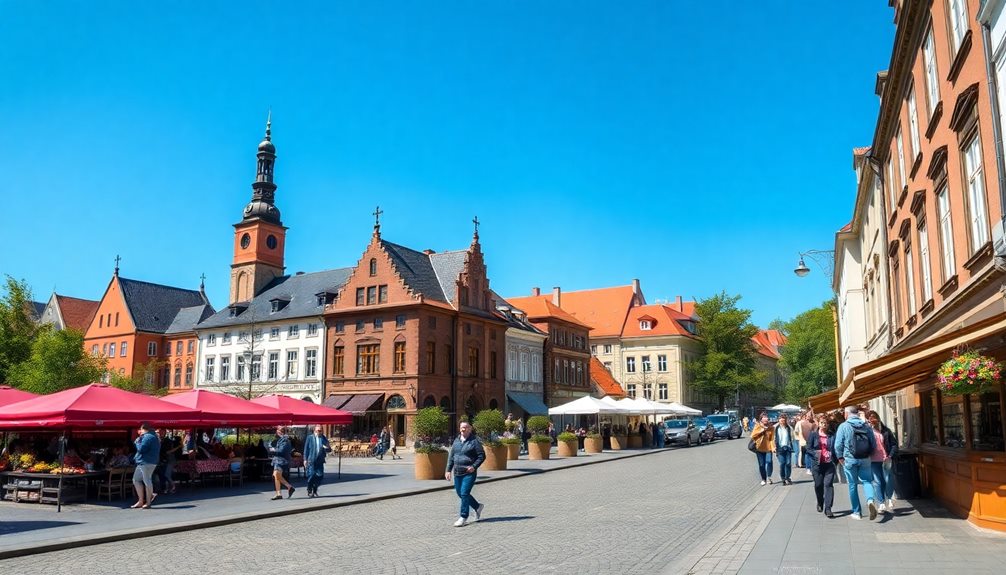
When you're in the Baltic capitals, don't miss the chance to explore some fantastic day trip options.
From the stunning Trakai Castle with its island setting to the sandy beaches of Jurmala, there's plenty to enjoy.
If you're up for adventure, Sigulda offers thrilling activities and breathtaking views that are hard to resist.
Trakai Castle Exploration
Just a short trip from Vilnius, you can immerse yourself in the enchanting world of Trakai Castle, a stunning 14th-century fortress nestled on an island in Lake Galvė.
As you explore this magnificent structure, you'll discover its historical significance as the former residence of Lithuanian Grand Dukes.
Here are some highlights to make your visit unforgettable:
- Castle Museum: Plunge into the medieval past with artifacts that tell the story of the Grand Duchy of Lithuania.
- Scenic Boat Rides: Enjoy unique views of Trakai Castle and its picturesque surroundings, especially in summer.
- Traditional Cuisine: Don't miss the chance to savor local Karaite specialties like "kibinai," delicious pastries filled with meat or veggies.
- Stunning Landscapes: Take in the breathtaking views around Lake Galvė, providing the perfect backdrop for your exploration.
Trakai Castle is an essential stop while exploring the Baltic Capitals.
After a walking tour of Tallinn or a stroll through any city center, this day trip offers a perfect blend of history, culture, and great views that'll leave you enchanted.
Jurmala Beach Retreat
For a revitalizing escape from the bustling capitals, head to Jurmala Beach, only 25 kilometers from Riga. This stunning destination is perfect for a day trip, boasting over 30 kilometers of sandy coastline, charming wooden houses, and picturesque parks. You can easily reach Jurmala by train in about 30 minutes, making it a convenient getaway.
Once you arrive, take your time to explore the city center. You'll find numerous cafes, restaurants, and shops waiting for you. Don't miss the Dzintari Concert Hall, where various cultural events and concerts take place.
If you're in the mood for some relaxation, consider indulging in spa treatments at one of the wellness centers, known for their therapeutic mud and mineral-rich waters.
Whether you're planning a tour from a hotel in Vilnius or just seeking a revitalizing break, a driver will pick you up and guarantee your journey is smooth.
After soaking in the sun, enjoy a stroll along the beach, breathe in the fresh sea air, and revel in the tranquil atmosphere of Jurmala Beach. You'll return to the capitals feeling rejuvenated and inspired.
Sigulda Adventure Activities
After enjoying the tranquil shores of Jurmala Beach, consider an exhilarating day trip to Sigulda, located about 53 kilometers from Riga. Known as the "Switzerland of Latvia," Sigulda offers stunning landscapes and a variety of outdoor adventure activities that will get your adrenaline pumping.
Here's what you can do in Sigulda:
- Hiking in Gauja National Park: Explore the beautiful trails that wind through lush forests and stunning river valleys.
- Zip-lining across the Gauja River: Experience an exhilarating ride as you soar above the scenic landscape.
- Visit Sigulda Castle: Discover this medieval fortress, dating back to the 13th century, and take in its rich history.
- Winter Sports: If you visit in winter, enjoy skiing or tobogganing at the Sigulda Ski Resort.
Whether you're interested in a walking tour of Riga followed by a thrilling day in nature or seeking to challenge yourself with the annual Sigulda Adventure Race, this destination has something for everyone.
Don't miss out on the chance to embrace the great outdoors while soaking in Latvia's breathtaking beauty!
Self-Drive Adventures in the Baltics
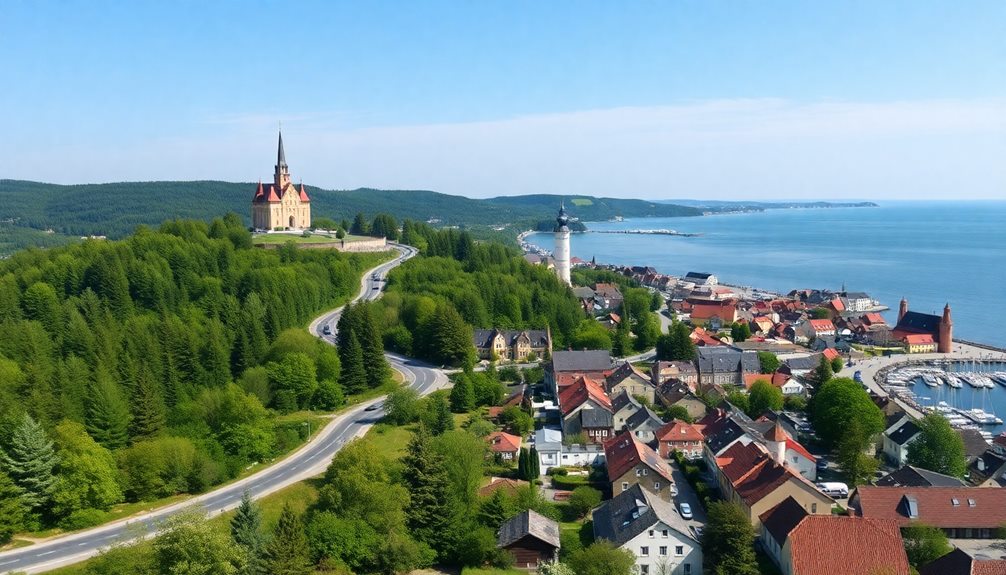
Why settle for a standard tour when you can commence a self-drive adventure through the stunning Baltics? With a rental vehicle conveniently delivered to your hotel, you'll have the freedom to explore remarkable sites like Trakai Castle and the Rumsiskes Museum at your own pace.
Recommended day trips from Vilnius, such as scenic visits to Druskininkai and local natural parks, allow you to immerse yourself in the culture and beauty of the region. The drive from Vilnius to Riga takes about 4.5 hours, but that's just the beginning. You can make stops at picturesque locations like Rundale Palace and the Hill of Crosses, enriching your journey with unforgettable sights.
Exploring the Baltic countryside by car opens doors to rural life, local farmsteads, and charming villages often overlooked by standard tour routes.
This self-drive option enhances your Baltic experience, giving you the chance for spontaneous exploration and personalized itineraries that cater to your interests.
Guest Experiences and Reviews
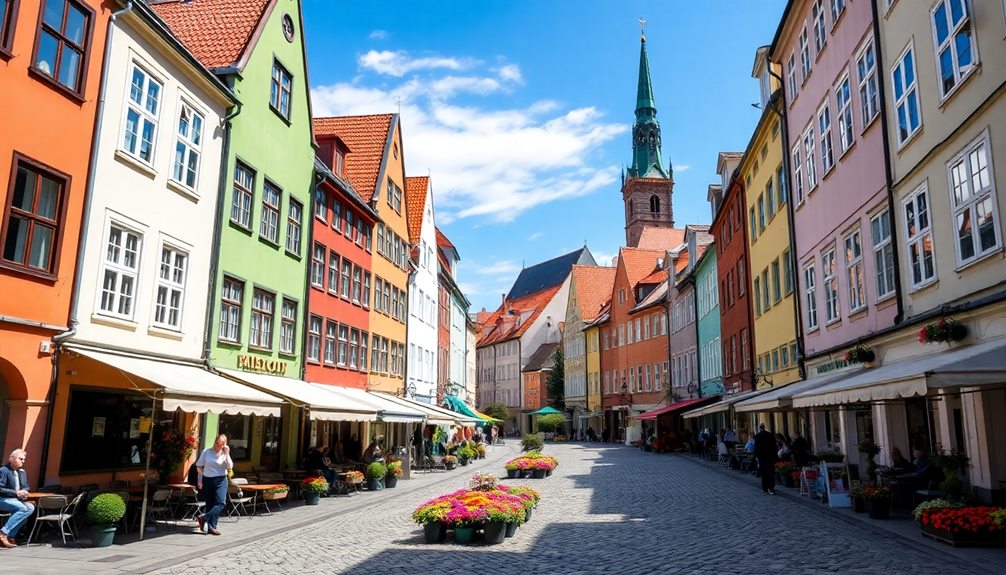
With an impressive average rating of 4.9 out of 5, guest experiences on walking tours in the Baltic capitals showcase the exceptional quality and personalized care provided.
Travelers often rave about the knowledgeable local guides who bring the cities to life with unique insights into their rich history and culture.
Here are some highlights from guest reviews:
- Engaging Storytelling: Participants appreciate the enthralling tales of folklore and legends, especially in Riga and Vilnius.
- Hidden Gems: Many guests love discovering off-the-beaten-path locations that standard tourist routes overlook.
- Personalized Care: The attention to individual needs and interests makes each tour feel tailor-made.
- Well-Structured Itineraries: Flexible routes allow you to explore key highlights while still having time for spontaneous adventures.
You'll find that these walking tours offer not just sightseeing but a deeper connection to the local culture.
The combination of engaging storytelling and personalized attention helps create memorable experiences, making your time in the Baltic capitals truly special.
Conclusion
As you wrap up your Baltic adventure, you can't help but feel that there's more to uncover. Each capital holds secrets waiting to be discovered, from Tallinn's medieval charm to Riga's hidden gems and Vilnius' storied past. You've merely scratched the surface, but the allure of day trips and self-drive escapades beckons you. What hidden wonders lie just beyond the horizon? The thrill of the unknown lingers, urging you to return and explore further.
Alfons is the visionary leader and driving force behind Voyager Info’s success. As the Editor in Chief, he brings a wealth of experience and an unwavering passion for travel to the helm of our cruise-centric platform.
With a lifelong fascination for exploring new horizons, Alfons discovered his love for the ocean and cruising at a young age. From sailing across pristine Caribbean waters to embarking on daring expeditions to far-flung destinations, he has amassed a treasure trove of first-hand experiences in the world of cruising.

